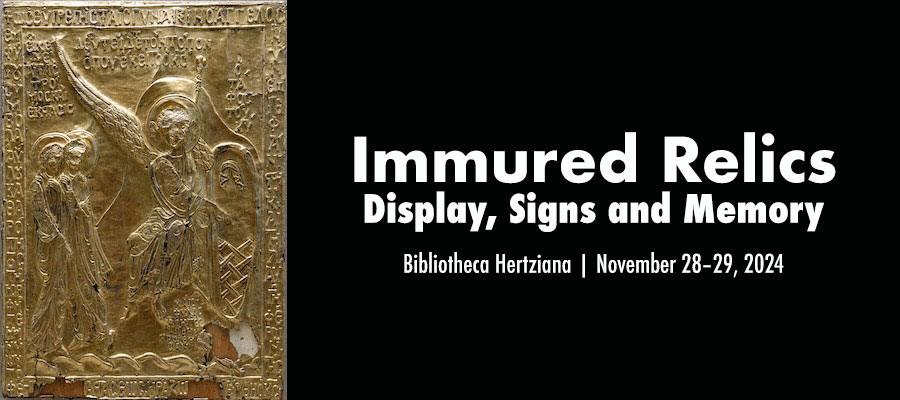Immured Relics – Display, Signs and Memory, Bibliotheca Hertziana, November 28–29, 2024
This workshop is to explore the relation between relics and architecture. First and foremost, we are interested in cases of relics physically built into the architectural fabric of churches and chapels, such as columns whose capitals have been equipped with relics, triumphal arches or the apse’s semi-dome with relic depositories, “secret chambers” or even foundations and walls fortified by holy material. In order to capture the variety of the phenomenon we decided to exclude the “standard case” of relics in direct relation to the Christian altar, mandatory since the 8th/9th century, as well as relics kept in sacristies or treasury chambers in which all the relics and reliquaries owned by a given church are kept. We are interested in the mise-en-scène of specific relics in a fixed and architectonically defined surrounding. Since no systematic overview documenting this phenomenon is available, we aim at establishing a taxonomy of immured relics, in order to ask, in a next step, why these and not other places in the sacred space where chosen to house a relic.
Another important aspect we would like to address is the question of presence, visibility and signalization or indication of immured relics. The act of immuring can be considered both a way of incorporating relics permanently into the architectural fabric as well as hiding and securing relics from theft. In which cases was such presence signaled? Is there a shift in the value of the visibility of relics over their mere presence (or some exclusive knowledge of their presence) that can be explained by changing customs with regard to relic veneration? Do some typologies of immured relics occur only at certain moments in time and at certain places or are the adopted solutions rather indifferent to chronology and geography? We would like to include examples ranging from Late Antiquity to the High Middle Ages (until 1300) on a global scale. Although our personal focus is on Christian relics, we are explicitly interested in relic practices of other religious contexts, in order to investigate the respective specificities of relic deposition in architecture. We would like, as well, to consider phenomena of persistence of practices of immuring relics, both as a legacy of Antiquity and as a tenacity of the medieval tradition in the Modern Age.
We seek contributions of about 20 minutes in Italian or English. The organizing institution will cover travel and accommodation costs for the speakers.
